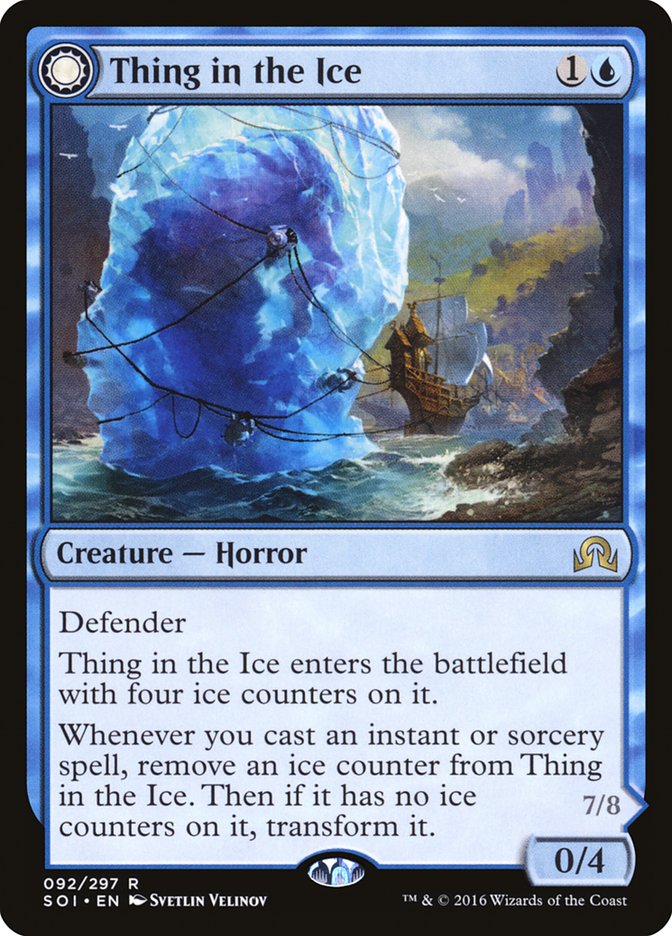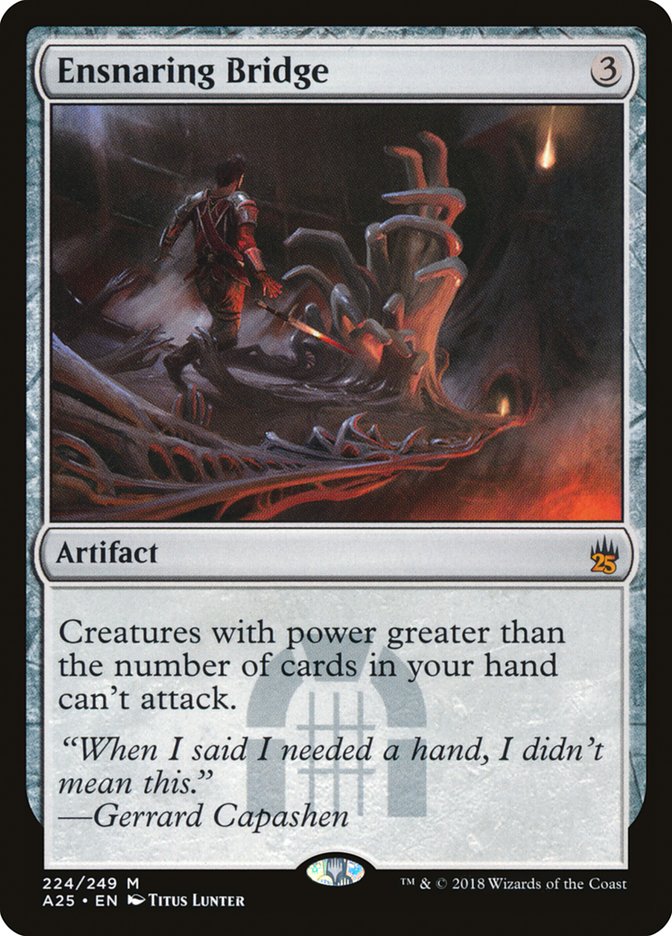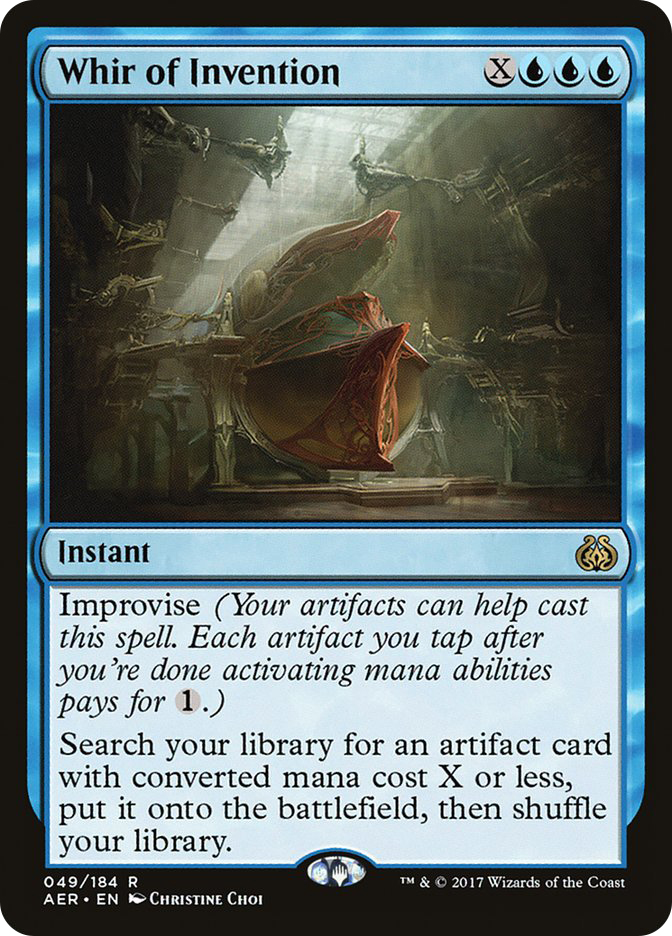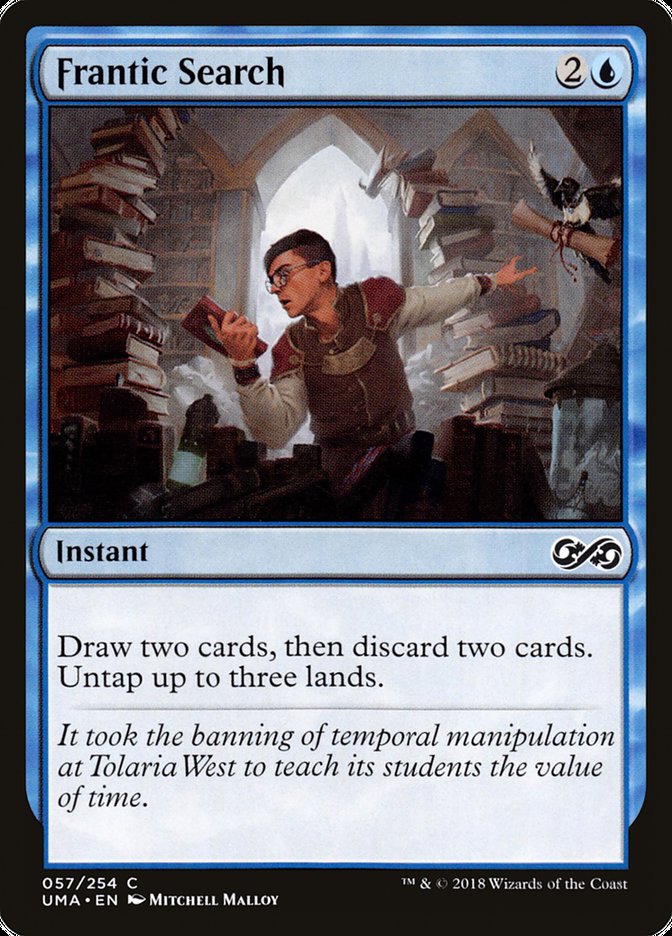Welcome to another edition of Fact or Fiction! Today, Shaheen Soorani, Patrick Sullivan, and Ross Merriam are here to render their verdicts on five statements about the state of the Modern format. Don’t forget to vote for the winner at the end!
1. With Michael Bernat’s win at Grand Prix Los Angeles, Izzet Phoenix is clearly Modern’s best deck and is the deck to beat heading into SCG Regionals.
Shaheen Soorani: Fact. Izzet Phoenix is the strongest deck in Modern. Power level in this format has a few measurable metrics. It’s common knowledge that the most successful decks in Modern are linear, proactive decks. Control has never had a fair shake around these parts, and I do not see that changing anytime soon. It will require multiple hot releases in Modern Horizons, one of which needs to be Counterspell. Until then, decks that attack the format with a proactive strategy will reign supreme.
The other two measurable metrics of the format are consistency and speed. Izzet Phoenix nails each category with flying colors, having more cantrips than any of the other top-tier decks, making it among the most consistent contenders. Blue cantrips will arguably get worse with the London Mulligan rule, but in the meantime Serum Visions and company have some work to do. The agreed-upon top two decks of Modern, Dredge and Izzet Phoenix, can be blazing fast. Although they aren’t typically killing the opponent on Turn 3, Turn 4 and Turn 5 are consistently in reach.
Patrick Sullivan: Fiction. Izzet Phoenix may be the best deck, but I’d stop well short of “clear.” Dredge put up similarly impressive numbers in terms of Day 2 and Top 8 representation at Grand Prix Los Angeles, and the Izzet Phoenix versus Dredge matchup is close enough that getting an edge there is unlikely to be an inflection point for either strategy.
It wouldn’t surprise me if Izzet Phoenix became the most-represented strategy, at least in the short-term. The deck is quite powerful, and I think the operations of the deck are more fun for the average player than Dredge. There’s a psychological element of not feeling as hopeless against certain sideboard cards, as well. Even if this stuff is an illusion (your win rate is your win rate is your win rate, etc.), it may be prudent to treat Izzet Phoenix as the best strategy when preparing for your next Modern event, even if you choose to play something else.
Grand Prix Los Angeles did solidify one thing: the burden of proof to not play Faithless Looting is extremely high. Even ostensibly “fair” strategies like Grixis Death’s Shadow have incorporated the card because the games are determined on such a short timeline that finding the right cards is more important than overall card economy. Modern has long been a format where the best things going on have involved doing the most powerful stuff available for one (or even zero) mana, and Faithless Looting (along with exploiting the graveyard) currently stands alone by that heuristic.
Ross Merriam: Fact.
2. With Dominic Harvey’s win at the Modern Classic at SCG Syracuse, Whir Prison has become a Tier 1 deck that must be respected heading into SCG Regionals.
Shaheen Soorani: Fiction. One smaller tournament result does not often propel decks into Tier 1 conversation right off the bat. Although Harvey proved that it can be a contender, easily destroying my teammate Edgar in the finals, it has some work to do before we start to metagame against it. Luckily for most competitive Modern players, artifact destruction that can be used against it is already in most sideboards. After the banning of Krark-Clan Ironworks, the amount of artifact hate has diminished; however, it will never be at a low enough level to allow these style decks to run amok.
Cards like Ensnaring Bridge will always force Modern players to keep a mandatory minimum of answers in their sideboards. There are some creature-based decks that cannot defeat the embargo on attacking, so expect that Shattering Spree to enter from any deck that can cast it. Control decks that are still flailing around in the format never leave home with a couple of copies of Stony Silence, helping them have some game against Mono-Green Tron, Affinity, and Hardened Scales. Outside of those top three decks that run artifacts, there are always some nonsense strategies that people like yours truly love to craft, centered around cards that can’t defeat a Stony Silence.
Patrick Sullivan: Fact. The mixture of Dredge and Izzet Phoenix rules out a wide range of typical interaction. Arclight Phoenix, Prized Amalgam, and Bloodghast evade non-exiling removal. Many creature-oriented strategies fold in the face of Thing in the Ice or Conflagrate. A blind spot of both decks (at least Game 1) is artifacts, with Ensnaring Bridge being especially problematic. Coupled with a bit of interaction for graveyards before sideboarding (Harvey’s winning maindeck contained Nihil Spellbomb, Tormod’s Crypt, and Grafdigger’s Cage), Whir Prison seems like a well-positioned strategy for as long the metagame has its present shape.
Another element I like about Whir Prison is that it’s strong against a lot of the second-order strategies people would gravitate towards. The deck contains many single-card soft locks against non-interactive decks that people play to fight graveyard decks (Damping Sphere for Storm, Witchbane Orb for Burn, etc.) The more problematic decks and cards (Tron, Kolaghan’s Command) have fallen by the wayside, and the more explicit anti-artifact sideboard cards don’t have enough wide application to show up very much. I don’t think Whir Prison plays very well in a wide field with people trying to resolve more expensive spells, but the present metagame is very much the opposite of that.
Ross Merriam: Fact. My response is more speaking to the “must be respected” part of this statement than the “Tier 1” part, since the latter term is so loosely defined, but the point is that Whir Prison is a real deck that is scary to play against as either Izzet Phoenix or Dredge, Modern’s top two decks at the moment.
As the metagame has narrowed considerably in recent months, it has also become exploitable by oddball decks like this one and Ad Nauseam. Of this group of decks whose rise has more to do with their favorable metagame position than raw power, Whir Prison appears to me to be the best, and could potentially stay around as the metagame shifts. It has a strong proactive gameplan, enough card selection from Ancient Stirrings and Whir of Invention to consistently execute that plan, and two great pieces of protection in Welding Jar and Spellskite, so artifact removal like Abrade and Ancient Grudge is typically inadequate.
I’ll be packing at least one copy of Shatterstorm for SCG Regionals this weekend, which should tell you enough.
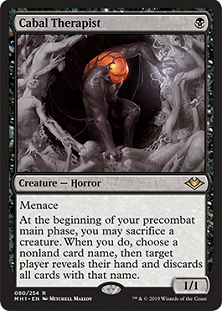
3. Cabal Therapist will be a major player upon the release of Modern Horizons.
Shaheen Soorani: Fiction. I will personally be using Cabal Therapist right off the bat if some other pieces fall into place for control to be viable. Lingering Souls is still in the format and there’s nothing I’d rather do than sacrifice a few Spirits and attack some combo player’s hand with extreme prejudice. The reality is that this is not as good as Cabal Therapy. Cabal Therapist is vulnerable to removal before combat, making it a liability in the competitive world.
You must justify running this answerable discard over some number of Inquisition of Kozilek and/or Thoughtseize. That is a tall order for a spell that doesn’t guarantee disruption and can be killed before the attempt even takes place. The flavor of this card is off the chain, taking me back to a time when spells were great and creatures were terrible. I must always remind myself that nostalgia can blind us on the efficacy of a card.
Patrick Sullivan: Fiction. It’s hard to predict this one so far out. Who knows what other support will arrive for Gravecrawler-style strategies with Modern Horizons? What cards will get banned (or unbanned) in between now and then? Will something that synergizes well with Cabal Therapist (Bitterblossom maybe?) randomly be awesome in the metagame at that point? All considerations that materially impact the card’s viability, and all unknowns at present.
I’d still bet against, just because Modern is so powerful, and the card pool is so vast, that it would be wise to bet against anything that isn’t obviously over the line. Cabal Therapist seems dope, well within the realm of consideration, but short of that bar. Still, there are plenty of things to like – it does something powerful and unique, and it costs one. You could do worse than betting on those characteristics, and people will be trying out all the plausible-seeming cards upon release. If that meets your criteria for “major player,” great. For me, it’s more about enduring impact, and unless Modern Horizons ushers in a ton of support for cheap, recursive creatures, I would guess it falls a bit short.
Ross Merriam: Fiction. This card has a lot of words on it that are evocative of powerful effects, but the slow pacing of it and fragile body make it much worse than its source material. Even casting it on Turn 1, you’re not going to be able to sacrifice a non-Therapist creature to the trigger until Turn 3. That lag time between cast and effect makes it much less useful as a piece of disruption, against fast combo in particular, but also in general, where many times the card you need to hit will be gone by the time you can take it.
This issue is exacerbated by the fact that the first trigger will often end with a blind guess and a miss, so you have even more time before you get any material advantage. Historically, Cabal Therapy has paired with other discard spells and Gitaxian Probe so you have a better chance of getting a look at the opponent’s hand before casting it, but for Cabal Therapist that’s another layer of setup and another deckbuidling restriction for a card that clearly wants to be paired with a high density of creatures or token generators so you can fuel the ability turn after turn to force your opponent to spew their spells quickly or lose them.
As a sacrifice outlet, the timing and frequency restriction on Cabal Therapist make it play out rather poorly, since two of the biggest tactical advantages those effects gain is the ability to blank exile-based removal on recursive threats and combo-kill with cards like Bridge from Below and Blood Artist. I’m not interested in slow and steady, especially in Modern.
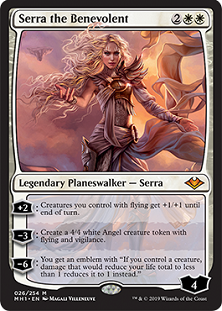
4. Serra the Benevolent is being overlooked and will be more impactful than people expect upon the release of Modern Horizons.
Shaheen Soorani: Fiction. Serra the Benevolent is not a good card in Modern and will not be impactful. If anything, people are expecting too much of the card because it’s a very weak four-cost planeswalker in a world full of them. In a format with Jace, the Mind Sculptor seeing barely any play, Serra the Benevolent will join the trade binder with poor Elspeth, Knight-Errant. At least with Elspeth, the plus ability protects the planeswalker, giving it some niche cases of usefulness. This planeswalker can defend itself with a minus but drops to one loyalty in the process. I’m not saying that Elspeth is much better, but it’s useful to have it in the discussion to predict where this card will end up.
Serra the Benevolent is a sweet design for casual play and that alone will give it some value in Modern Horizons. If the plus ability wasn’t horrendous, perhaps giving your creatures with flying lifelink, then we could have a more in-depth conversation for competitive play in Modern. The one saving grace is its ability to ultimate after one activation. If that is your goal, I suggest jamming a few copies of Worship in your creature deck as a guaranteed, difficult-to-remove effect.
Patrick Sullivan: Fiction? I don’t know how impactful an aggregation of community feedback believes Serra the Benevolent to be, but this one seems well short. Maybe your Bant Spirits deck (or some new strategy that can really leverage the “plus” power) plays this in lieu of some other planeswalker in the sideboard? Most of the time creature decks sideboard a white planeswalker, it’s to give a different dimension against someone playing a long game with a lot of removal, and Serra the Benevolent seems so much worse in that role than Gideon, Ally of Zendikar (or even Elspeth, Knight-Errant.) This is to say nothing of the extremely high burden of proof for any four-mana card in Modern; even Jace, The Mind Sculptor isn’t ubiquitous among blue control decks.
Serra the Benevolent is a great read, and if it ended up in a Bant Spirits 75, I wouldn’t be shocked. But Modern is already saturated with extremely powerful four-mana white planeswalkers, of whom the sum total represents a fringe element of Modern sideboards. Call me skeptical here.
Ross Merriam: Fact. Cabal Therapist is getting more hype because of the pedigree of Cabal Therapy, so it’s only natural for the other preview card to be overlooked, especially because it’s a four-mana planeswalker in a format where Jace, the Mind Sculptor has failed to be much more than a role player in control decks with Terminus.
Despite Modern’s reputation as a format ruled by degenerate decks, there’s been plenty of room for fair aggressive and controlling strategies over the last year, and I expect we’ll cycle back to them in time. Against all those decks, Serra the Benevolent can be an effective card. It functions like Gideon, Ally of Zendikar against control decks, effectively presenting two threats in one after using its -3, though leaving the planeswalker itself within Lightning Bolt range makes me say Gideon is the better option there.
But against the aggressive decks, and indeed many other decks in Modern, the ultimate is nigh unbeatable. With any amount of set-up you can create an unanswerable Worship that colds everything from Humans to Amulet Titan. I’m not saying this card is going to be an all-star, but it does some powerful things in fair games of Magic, and I expect it to pop up as a role-player from time to time, which is more than I think most are giving it credit for.
5. Courtesy of @CubeApril on Twitter, if Frantic Search were Modern-legal, it would be more powerful than Faithless Looting.
Shaheen Soorani: Fiction. Faithless Looting is a busted card in Modern and Legacy because it costs one mana. When this card was developed, it immediately enhanced combo decks in the older formats. The banning conversation has a few Faithless Looting loyalists that defend its existence in Modern, but I don’t see how long they can keep this card on life support. It breaks the fabric of the format, allowing decks to place a great deal of power on the battlefield in the first two turns with little drawback. The effect is so powerful that even Grixis Death’s Shadow was running a couple copies, just to churn out some selection and allow a big Gurmag Angler to join the party early.
To put Frantic Search against Faithless Looting is silly. First off, they’re not putting this card in Modern Horizons. I think management has had their fill of graveyard nonsense in the older formats, confirming the life sentence in purgatory for Frantic Search. Secondly, the three-mana tag on Frantic Search makes it significantly worse than Faithless Looting.
Converted mana cost means everything in Modern and Legacy. The goal of these decks is to have the game nearly locked up by Turn 3, not begin the process. If Frantic Search was legal in a fantasy world, then I’m sure it would be played, but in addition to Faithless Looting. Until forcefully removed, Faithless Looting will stay at the top of Modern as the best graveyard filler ever printed.
Patrick Sullivan: Fiction. This one is really tough, in part because it involves narrowing down “powerful.” Ubiquity? Power level of the appropriate strategies? Highest ceiling? Highest floor? How well it lines up against other format staples? For ease I’m trying my best to blend this all at the same time, but I think it’s reasonable for people to define this differently.
Frantic Search hasn’t been permissible in a heavily played Constructed format for well over a decade. Even for people who have never seen the card resolve, there’s an ambient sense that Frantic Search is stupid, well over the line. It has coincided with some of the most busted strategies of all time – Storm with Mind’s Desire, Standard Replenish, Tolarian Academy, High Tide, and several others.
However, it’s important not to have the conversation within the framework of all formats, or all formats where the respective cards have appeared, but within the present Modern card pool I would argue that Faithless Looting is the better of the two
Where does Frantic Search shine? It’s better at adding to the Storm count (zero mana the turn in question, instead of one), and it’s especially good when you’re getting a rebate, either because you have lands that generate multiple mana or you have some discount on spells. In the context of Modern, when does the latter most commonly come up?
You have Tron plus a blue source of mana, and now instead of having eight mana, you have much more. You have Baral, Chief of Compliance, and now the discount on Frantic Search actually produces mana. You have Simic Growth Chamber and an Amulet of Vigor trigger, and now you’re ready to go a full turn faster.
These scenarios would certainly come up, but it feels like I’m describing game states where the player in question is already likely to win the game. You need help the games where you play Turn 2 Simic Signet, Turn 3 Natural Tron into X? It matters that it’s Ulamog instead of Ugin, the Spirit Dragon? Your Baral survived; it matters that it was Frantic Search instead of another Desperate Ritual?
And even though Frantic Search is “free” (or even better) once it’s resolved, it’s actually three mana to get on the stack, and getting three mana spells on the stack in Modern isn’t a trivial exercise. All the discard and counterspells line up the right way. If you’re playing against resistance, Frantic Search provides much less bulk smoothing than Faithless Looting.
The other side of this, and maybe there’s a collective desensitization to it at this point, is just how often you win the game when you have Faithless Looting on the first turn, and how many defensive measures do nothing to stop this. It’s presently at a level of ubiquity that I don’t think Frantic Search would approach, were it legal. Cards that cost one exist on a different plane than everything else in Modern.
Frantic Search would be unwise to make legal, to put it mildly. I think it would be a material boon to Amulet of Vigor strategies and would probably show up in other places. But there are so many backstops against three-mana cards in Modern, especially in relation to cards that cost one. Frantic Search may be more dramatic, may have a higher ceiling, and may have a greater historical oomph, but in the context of Modern, I’m sticking with the card that costs one.
Ross Merriam: Fact. Say it with me: Free spells are busted.
Again: Free spells are busted.
One more time so it really sticks: Free. Spells. Are. Busted.
Yes, at a three-mana initial investment, Frantic Search is going to be awkward with Arclight Phoenix at times, but in combination with bouncelands or cost reduction effects like Baral, Chief of Compliance, Frantic Search would do ridiculous things.
Faithless Looting is closer in power level to Frantic Search than my opening statement lets on, and Looting is significantly better in any fair deck with graveyard synergies like Mardu Pyromancer or any deck that’s trying to set up before Turn 3, like Dredge, but we’re not just taking Faithless Looting decks and swapping the other card in, we’re building in a new Modern universe. I’m not sure what the best Frantic Search deck would look like, but if there’s any lesson I’ve learned over my twenty years playing Magic, it’s this one:
Free. Spells. Are. Busted.



